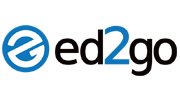Financial Accounting Fundamentals
This course will teach you the tools you'll need to understand the fundamentals of financial accounting.read more...
A Crash Course in Causality: Inferring Causal Effects from Observational Data
Over a period of 5 weeks, you will learn how causal effects are defined, what assumptions about your data and models are necessary, and how to implement and interpret some popular statistical methods. read more...
Business Strategy
In this course you will learn how organizations create, capture, and maintain value, and how it is fundamental for sustainable competitive advantage. You will be able to better understand value creation and capture, and learn the tools to analyze both competition and cooperation from a variety of perspectives, including the industry level (e.g, five forces analysis), and the firm level (e.g, business models and strategic positioning). read more...
Initiating and Planning Projects
The courses in the Introduction to Project Management Principles and Practices Specialization are a recommended precursor to UCI's Applied Project Management Certificate. read more...
Payroll Management
This Payroll course is all about payroll management, how to calculate the payroll and general overall understanding about what payroll is and the legal requirements in place, the forms, the deadlines, the process and procedures. read more...
Data Science Methodology
This course has one purpose, and that is to share a methodology that can be used within data science, to ensure that the data used in problem solving is relevant and properly manipulated to address the question at hand. read more...
 Powerful Search
Powerful Search
finding the right offer
 Flexible Filters
Flexible Filters
specifying your needs
 Compare Products
Compare Products
making the right choice
 Trusted Hosts
Trusted Hosts
assuring best quality












































































































